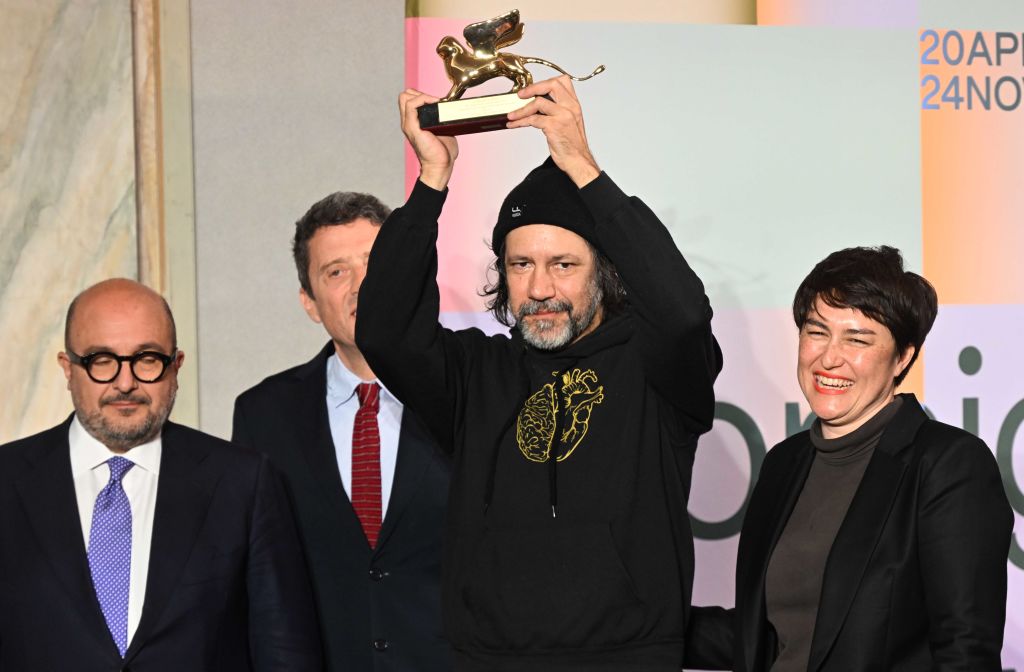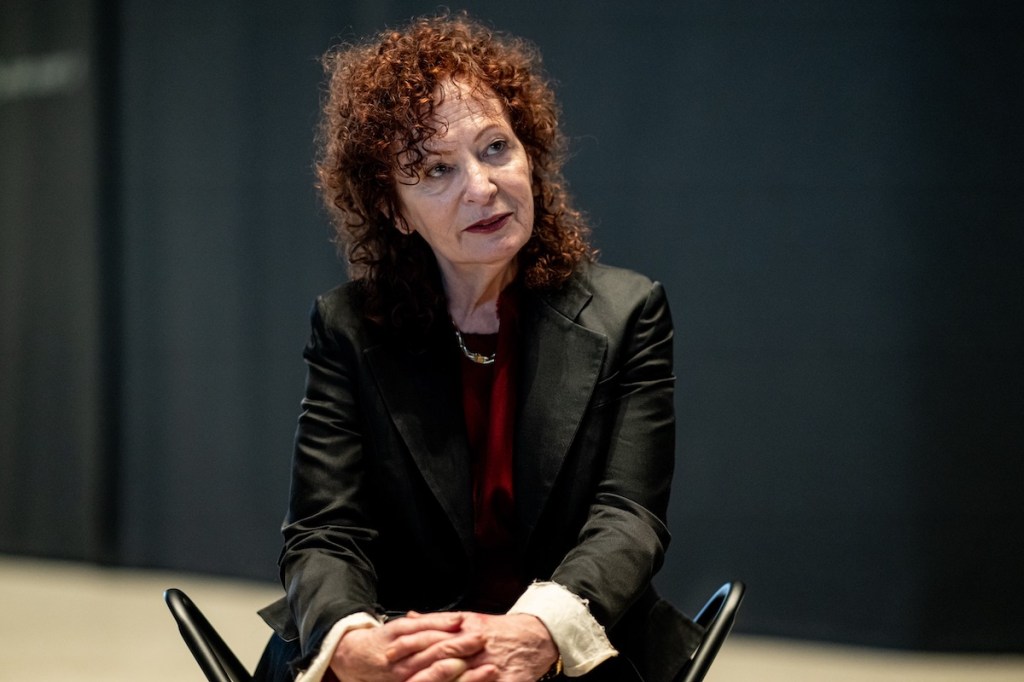A First Nations artist and a collective of four Māori women have won the top prizes at the 60th edition of the Venice Biennale.
Archie Moore, who represented Australia, won the Golden Lion for best national pavilion. The award, which is the biennale’s most prestigious achievement, was given during a ceremony on Saturday, April 20.
The decision was taken by the biennale’s jury made up of curators Julia Bryan-Wilson, Alia Swastika, Chika Okeke-Agulu, Elena Crippa, and María Inés Rodríguez.
In a speech recognizing the artist, curator Bryan-Wilson praised Moore’s “quietly powerful” installation. Moore has traced his own family history backwards to create a family tree, which he has carefully inscribed in chalk on the walls and ceiling of the pavilion.
The hand-drawn work was meticulously researched over more than four years and includes 3,484 people, and inscribes some 65,000 years of history, effectively offering up a monumental First Nations family tree. Piles upon piles of state records that Moore has dug up as part of his research are also included in a moat in the center of the installation, drawing attention to the depth of his research as well as the high rates of incarceration of First Nations people.
Archie Moore, kith and kin (2024). Australia Pavilion at Venice Biennale 2024. Photo: Andrea Rossetti / © the artist / Image courtesy of the artist and The Commercial.
“This installation stands out for its strong aesthetic, its lyricism, and its invocation of shared loss for occluded pasts. With his inventory of thousands of names, Moore also offers a glimmer of possibility for recuperation,” curator Bryan-Wilson said. Moore is the second First Nations artist to represent the country at the biennale after Tracey Moffatt who represented the country in 2017.
In accepting the award, Moore remarked: “Aboriginal kinship systems include all living things from the environment are in a larger network of relatedness, the land itself can be a mentor or a parent to a child. We are all one and share a responsibility of care to all living things now and into the future.”
The Golden Lion for the best participant in the main exhibition went to the Mataaho Collective, a group of four Māori women from Aotearoa, who showed a memorable installation of luminous straps in the Arsenale. Called takapau, a word for woven Māori birthing mats, the monumental latticed work recognizes matrilinear traditions of textile work, as well as often-overlooked manual laborers, as it is made with straps often used to secure moving cargo.
The award was accepted by Erena Baker, Sarah Hudson, and Terri Te Tau, while the fourth member of the group, Bridget Reweti, prepares to give birth to her first child back home. In accepting the prize, Hudson thanked the curator Adriano Pedrosa for “uplifting so many Indigenous and queer voices with this exhibition.”
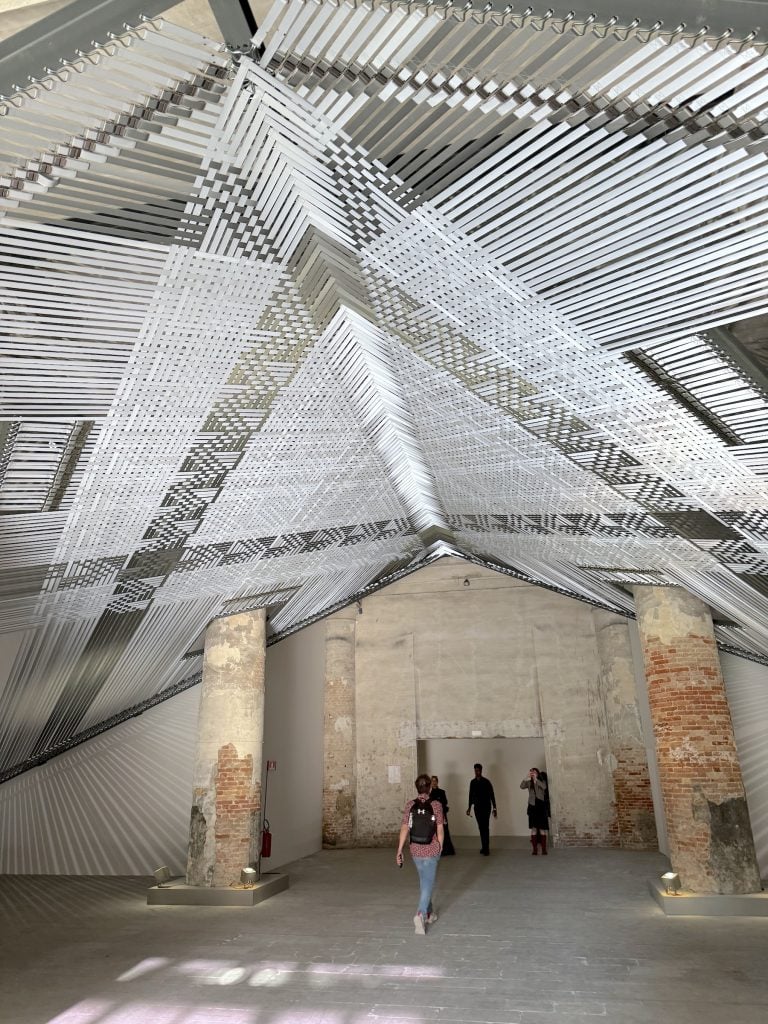
Mataaho Collective, Takapau (2022) in the Arsenale for “Foreigners Everywhere.” Photo by Ben Davis.
The Silver Lion for a promising young participant in the international exhibition went to British-Nigerian artist Karimah Ashadu, whose video Machine Boys and related brass sculpture, Wreath, looks at the community of young migrant men in Lagos who ride illegal motorbike taxis, recording their subcultural experience as well as economic precarity. In recognizing Ashadu, curator Swastika commended her “sensitive and intimate” work that “upends gendered assumptions about the gaze and what is considered proper to commemorate.”
A special mention went out to Palestinian-American visual artist and activist Samia Halaby, whose 1969 abstract painting entitled Black is Beautiful, appeared in the Nucleo Storico part of the exhibition. The honor was accepted on her behalf by her gallerist, Andree Sfeir-Semler, who thanked the jury, saying: “She has waited 87 years for recognition.” The artist, speaking over Zoom from New York, dedicated her award “to the youthful members of the press who have died in Gaza,” and thanked curator Adriano Pedrosa for bringing so many stateless artists to the fore during this exhibition.
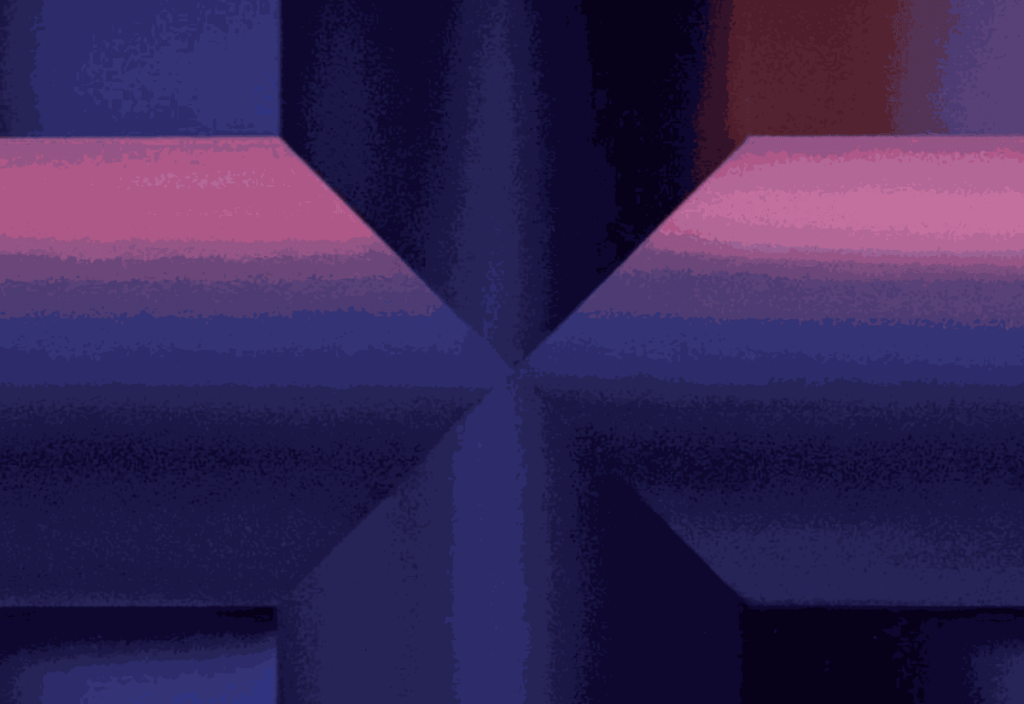
Samia Halaby, Black is Beautiful (1969). Courtesy the artist and Sfeir-Semler gallery.
The second special mention for the main exhibition went to artist La Chola Poblete, whose large-scale watercolors deal with histories of trans and Indigenous perspectives. Curator Crippa said she was being recognized for her work that “resists the exoticization of Indigenous women.”
The jury’s special mention for a national pavilion went to the Republic of Kosovo. They honored Doruntina Kastrati, whose sculptural installation The Echoing Silences of Metal and Skin, draws on the experiences of 12 women who work in a Turkish delight factory in her hometown of Prizren. Addressing feminized industrial labor and workplace inequality, the installation of metal sculptures are modeled after the walnut shells that are used to make the sweets, as well as the medical parts often used to replace worker’s knees.
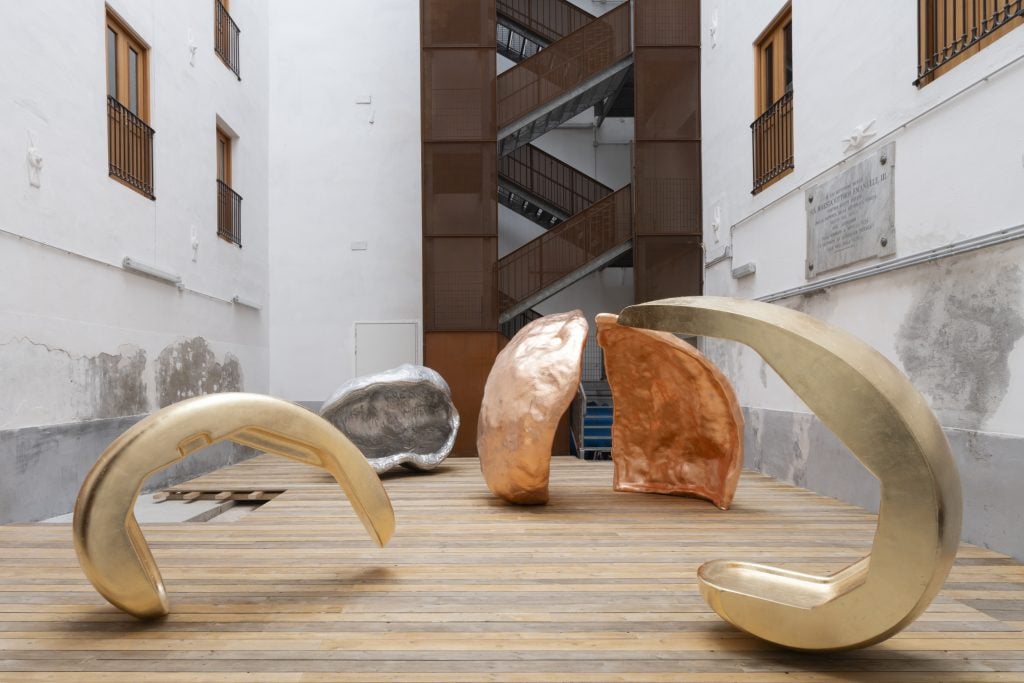
Doruntina Kastrati, The Echoing Silences of Metal and Skin Kosovo Pavilion (2024). Photo: Lorenzo Palmieri
As announced earlier this year, Golden Lions for lifetime achievement were also awarded to Italian-born Brazilian artist Anna Maria Maiolino and the Paris-based Turkish artist Nil Yalter. Curator Pedrosa said he chose them because they are “two extraordinary, pioneering women artists who are also migrants and who embody in many ways the spirit of Stranieri Ovunque—Foreigners Everywhere.”
In accepting her prize, Maiolino said: “I feel that this biennale is a political act, a metaphorical act, a poetical act. Putting together foreigners everywhere at a time when there is this strong impulse towards death, art is an adventure of our soul that brings us to be better.” Yalter dedicated her award ”to peace in the world,” adding: “That’s all we need.”
Both first-time Biennale exhibitors, Maiolino showed a large-scale gestural clay sculptural installation at the Arsenale, and Yalter’s installation Exile is a hard job took a prominent position in the central pavilion at the Giardini.
The 60th edition of the Venice Biennale officially opens to the public today, and runs through November 24 at the Giardini and Arsenale.
Follow Artnet News on Facebook:
Want to stay ahead of the art world? Subscribe to our newsletter to get the breaking news, eye-opening interviews, and incisive critical takes that drive the conversation forward.






